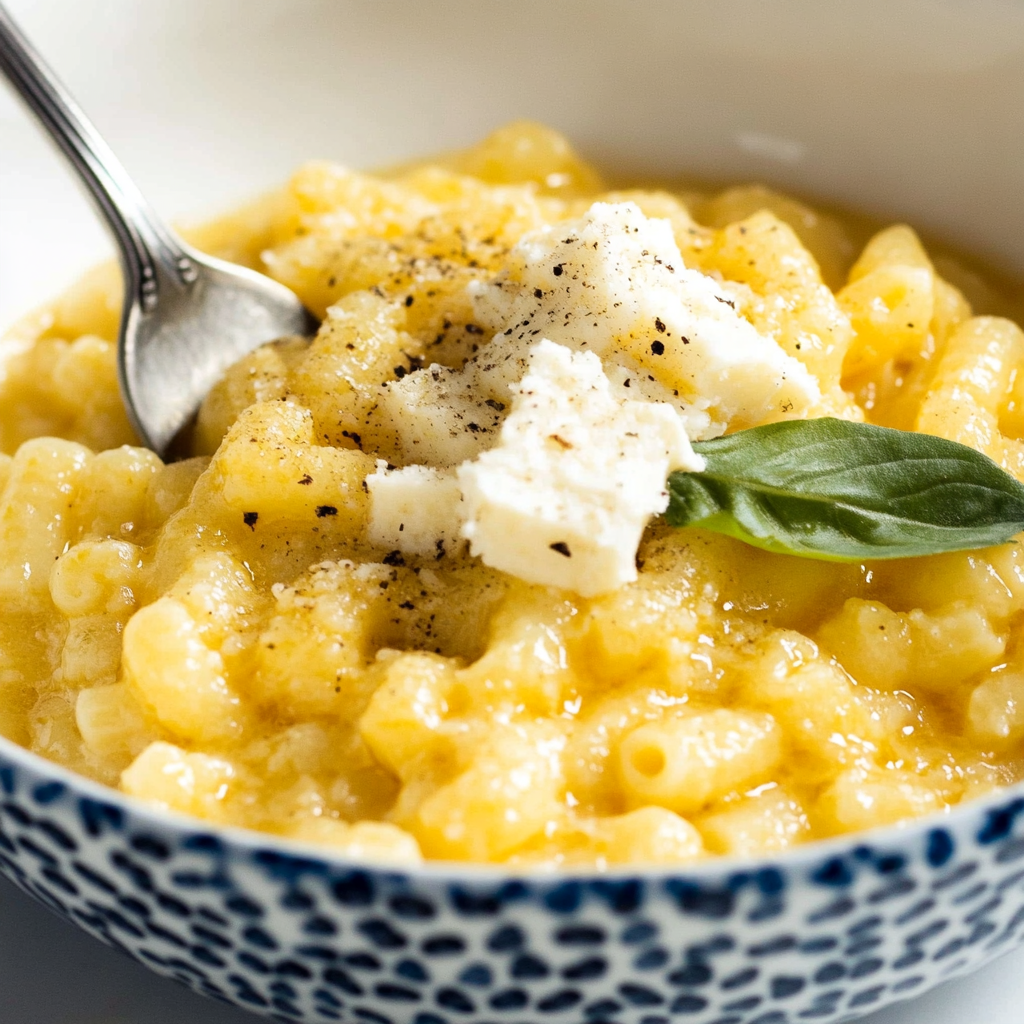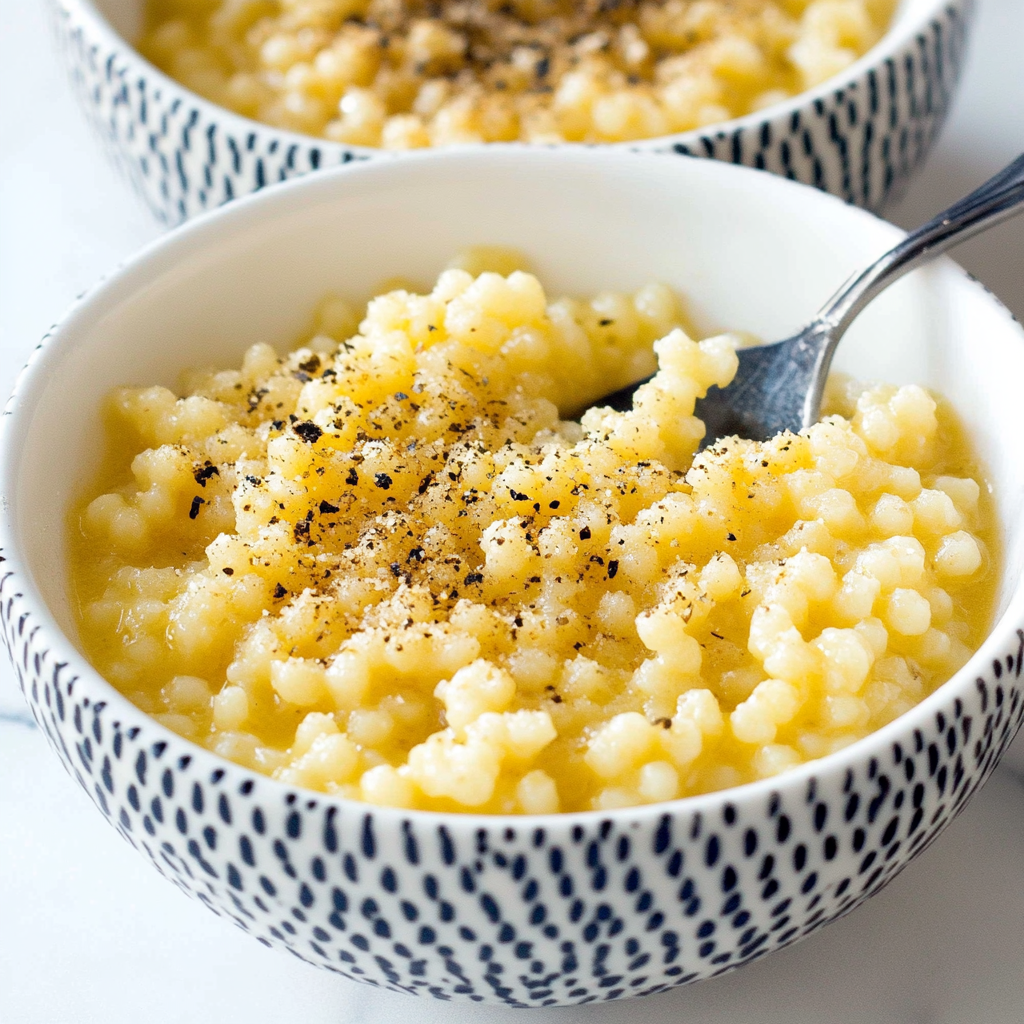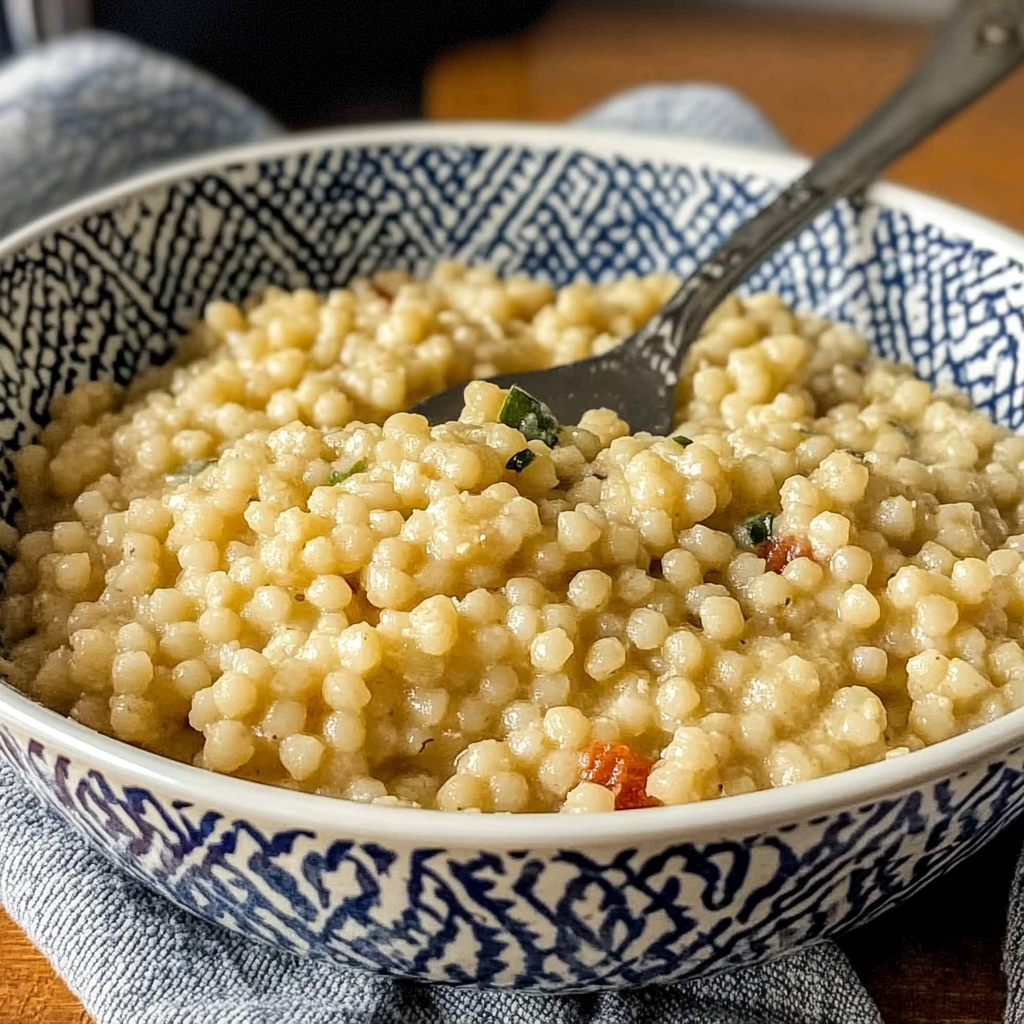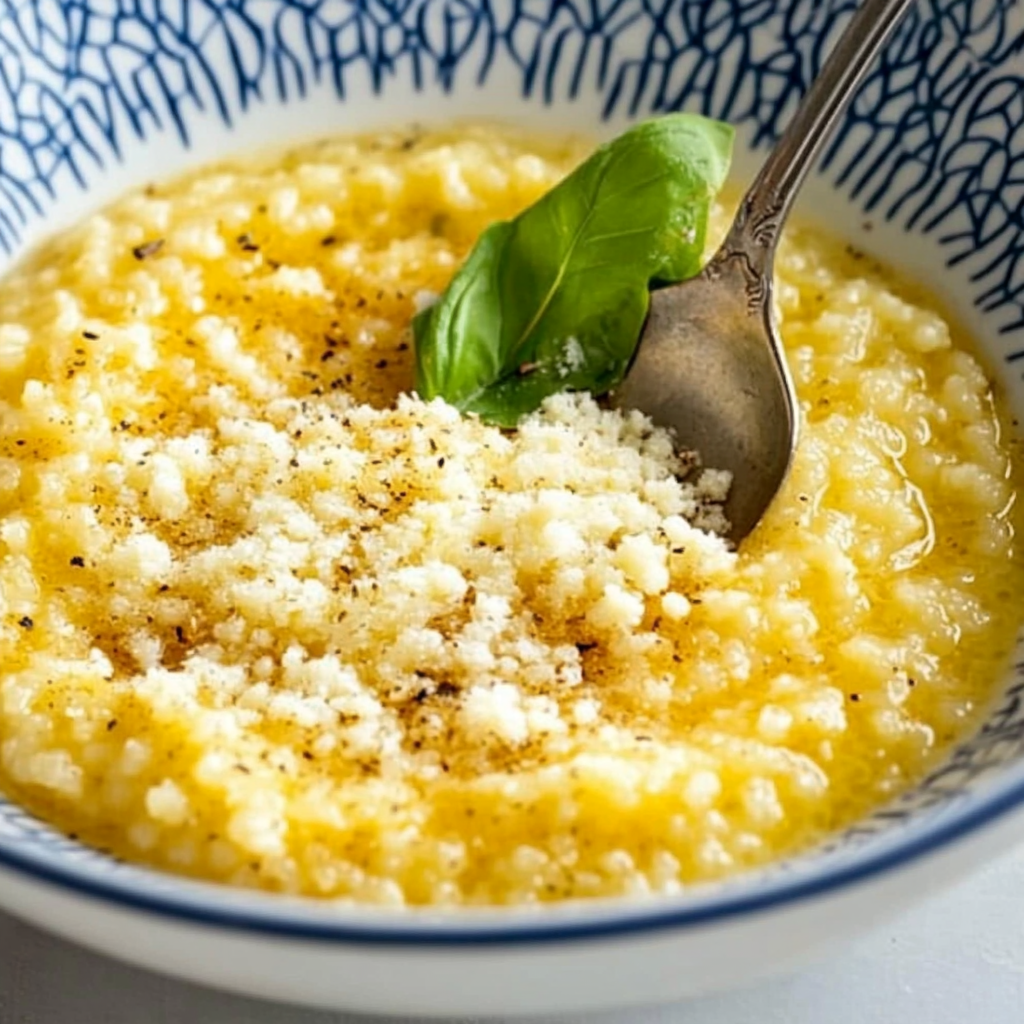Introduction to Pastina
When it comes to comfort food, nothing is as simple and satisfying as pastina. This tiny pasta, often shaped like stars or dots, is a staple in Italian households. The classic Pastina Recipe is easy to prepare, making it a go-to dish for busy weeknights, cold weather, or soothing meals for kids and adults alike.
Not only is pastina delicious, but it’s also incredibly versatile. You can cook it in a rich chicken broth for a light soup or mix it with butter and cheese for a creamy, hearty dish. In fact, variations of this Italian pastina recipe can be found in many cuisines, including acini de pepe dishes that offer a similar texture and taste. For more ideas, check out acini de pepe recipes.
Even better, pastina is packed with nutritional benefits. It provides a quick source of energy while being gentle on the stomach. Whether you’re looking for a quick meal or a classic Italian remedy for colds, this dish delivers. Ready to learn how to make the perfect Pastina Recipe? Let’s get started!
What is Pastina Recipe ?
Pastina is the smallest variety of Italian pasta, traditionally used in soups and simple, comforting dishes. The name itself means “little pasta” in Italian, and it comes in various shapes like stelline (stars), acini di pepe (peppercorns), and orzo (grains). Because of its tiny size, pastina cooks quickly, making it a favorite for easy, nourishing meals.
This versatile pasta is often used in broth-based dishes. When simmered in chicken broth, it creates a light yet satisfying soup. For a creamier dish, you can cook it with milk, butter, and cheese. In fact, if you love rich and creamy textures, you might also enjoy this baked cottage cheese eggs recipe, another comforting dish that pairs well with soft textures.
Unlike regular pasta, pastina is often considered a remedy for colds. Many Italian families make a warm bowl of pastina soup when feeling under the weather. Similarly, other warm, soothing meals, like Lipton onion soup mix recipes, can offer comfort during chilly days. Whether enjoyed as a simple weeknight meal or a healing dish, pastina is a timeless classic in Italian cooking.
Why is Pastina Recipe Popular?
There’s a reason pastina has been a beloved comfort food for generations. This tiny pasta is not just easy to make—it’s also incredibly soothing and versatile. Families across Italy prepare it as a quick meal, especially for children and those feeling under the weather.
One of the main reasons pastina remains so popular is its nutritious and gentle nature. Unlike heavier pasta dishes, it’s easy to digest, making it a great option for toddlers, seniors, or anyone needing a light yet satisfying meal. Similarly, warm and easy-to-eat meals like chicken souse provide the same kind of comforting nourishment.
Another reason for pastina’s popularity is its customizability. Whether mixed with butter and cheese or cooked in rich chicken broth, it always delivers big flavor in a small bite. In fact, if you enjoy warm, hearty dishes, you might also love Cajun turkey, another savory dish packed with comfort.
Ultimately, pastina is more than just a meal—it’s a taste of childhood, a remedy for colds, and a warm hug in a bowl.
Traditional Pastina Recipe (Step-by-Step)
A warm bowl of pastina is the ultimate Italian comfort food. This simple yet flavorful dish is perfect for busy days or cozy nights. With just a few ingredients, you can make a creamy, satisfying meal in minutes.
Ingredients You’ll Need
- ½ cup pastina (stelline, acini di pepe, or orzo)
- 2 cups chicken broth (or vegetable broth for a vegetarian option)
- 1 tablespoon butter
- ¼ cup grated Parmesan cheese
- 1 egg (optional, for added creaminess)
- Salt and pepper (to taste)

Step-by-Step Instructions
Boil the Broth
- In a medium saucepan, bring the chicken broth to a gentle boil over medium heat.
- For a deeper flavor, try using homemade broth like the one in this chicken souse recipe.
Cook the Pastina
- Stir in the pastina and reduce the heat to low.
- Let it simmer for 4-5 minutes, stirring occasionally, until it absorbs most of the broth.
Add Butter and Cheese
- Turn off the heat and stir in butter until fully melted.
- Next, mix in the Parmesan cheese for a creamy texture.
- If you love cheesy dishes, you might also enjoy baked cottage cheese eggs.
Optional: Add Egg for Extra Creaminess
- Crack an egg into a bowl and whisk it.
- Slowly stir it into the hot pastina, mixing continuously to avoid scrambling.
Season and Serve
- Add salt, pepper, and more cheese if desired.
- Serve warm and enjoy this classic Italian dish!
This quick and delicious meal is perfect for kids and adults alike. Try it today for a taste of tradition!
Different Variations of Pastina Recipe
One of the best things about pastina is its versatility. This tiny pasta can be transformed into a creamy dish, a hearty soup, or even a wholesome meal for babies. With just a few simple adjustments, you can create a version that suits your taste and dietary needs.
1. Classic Italian Pastina (Butter & Cheese)
- This simple yet flavorful dish is the most traditional way to enjoy pastina.
- Cook pastina in chicken broth, then stir in butter and Parmesan cheese for a creamy, comforting texture.
- For a rich and cheesy variation, try pairing it with baked cottage cheese eggs.
2. Pastina Soup (Italian Penicillin)
- When cooked in extra broth with garlic, carrots, and celery, pastina turns into a nourishing soup.
- This version is perfect when you’re feeling under the weather, much like a warm bowl of chicken souse.
- Add shredded chicken or turkey for extra protein and heartiness.
3. Creamy Pastina
- Instead of broth, cook pastina in milk to create a rich, velvety texture.
- Stir in butter, Parmesan, and a whisked egg for an extra creamy and luscious dish.
- This version is similar in texture to risotto, but it cooks much faster.
4. Pastina for Babies
- Many parents use pastina as a first solid food because it’s soft and easy to digest.
- Cook it in unsalted broth or water, then mash it with pureed vegetables or a bit of olive oil.
- Like acini de pepe dishes, this version is perfect for little ones.
No matter which variation you choose, pastina is always a delicious and comforting meal!

Expert Tips for the Best Pastina Recipe
Making the perfect bowl of pastina is easy, but a few expert tips can take your dish to the next level. From choosing the right broth to achieving the creamiest texture, these tricks will help you master this classic Italian comfort food.
1. Use High-Quality Broth for Maximum Flavor
- Since pastina absorbs liquid quickly, a rich, flavorful broth enhances the dish.
- Opt for homemade chicken broth or a high-quality store-bought version.
- If you enjoy deep, comforting flavors, try making your own broth like in this chicken souse recipe.
2. Avoid Overcooking the Pastina
- Pastina cooks in just 4-5 minutes, so watch closely to prevent it from becoming mushy.
- If using it in soup, cook it separately and add it just before serving.
3. Stir Constantly for a Creamy Texture
- For a rich and velvety consistency, stir in butter and cheese immediately after cooking.
- If you love creamy dishes, you might also enjoy baked cottage cheese eggs.
4. Add an Egg for Extra Creaminess
- Whisk a room-temperature egg and stir it into hot pastina for a silky, custard-like texture.
- This technique makes pastina even richer and more filling.
5. Don’t Forget the Seasoning
- A pinch of salt and freshly ground pepper enhances the flavors.
- A sprinkle of nutmeg can add warmth to cream-based variations.
Follow these tips, and your pastina will always be flavorful, creamy, and perfectly cooked!
Common Mistakes to Avoid
While pastina is an easy dish to make, small mistakes can ruin its texture and flavor. Avoid these common errors to ensure a perfect bowl every time.
1. Using Too Much Water
- Unlike traditional pasta, pastina doesn’t need a large pot of water to cook properly.
- Instead, cook it in just enough broth so it absorbs the flavor without being drained.
- For a more flavorful dish, consider using a homemade broth like the one in this chicken souse recipe.
2. Overcooking the Pastina
- Pastina cooks in just 4-5 minutes, so leaving it too long makes it mushy.
- To avoid this, remove it from heat as soon as it’s tender.
3. Adding Cheese Too Early
- If Parmesan is added while the pastina is still cooking, it may clump instead of melting smoothly.
- Always stir in cheese and butter after removing from heat.
- For another creamy dish, check out these baked cottage cheese eggs.
4. Forgetting to Season Properly
- Since pastina is mild, seasoning is essential to bring out its flavor.
- A pinch of salt, pepper, and even a dash of nutmeg can make a big difference.
By avoiding these mistakes, your pastina will always be creamy, flavorful, and perfectly cooked!

Frequently Asked Questions (FAQs)
Here are some of the most common questions about pastina, along with expert answers to help you make the perfect dish.
1. What is the best broth to use for Pastina Recipe?
The best broth depends on your preference. Chicken broth adds the most flavor, while vegetable broth is great for a vegetarian option. For a rich and hearty taste, try making your own like in this chicken souse recipe.
2. Can I make pastina without broth?
Yes! You can cook pastina in water, milk, or a combination of both for a creamier texture. Just remember to season it well.
3. How do you make pastina creamy?
To make it extra creamy, stir in butter, Parmesan cheese, and a whisked egg after cooking. You can also cook it in milk instead of broth.
4. Is pastina the same as orzo?
No, but they are similar. Orzo is slightly larger and has a rice-like shape, while pastina comes in tiny star or round shapes.
5. Can I freeze cooked pastina?
Yes, but it’s best to store it without cheese or butter. Reheat with a splash of broth or milk to restore the texture.
6. What’s the best cheese for pastina?
Parmesan is the most traditional choice, but Pecorino Romano or Grana Padano also add great flavor.
7. How do I make pastina for a baby?
Cook it in unsalted broth or water, then mash it with pureed vegetables or a little olive oil for a smooth texture. For more baby-friendly pasta ideas, check out these acini de pepe recipes.
Got more pastina questions? Leave them in the comments! 😊


